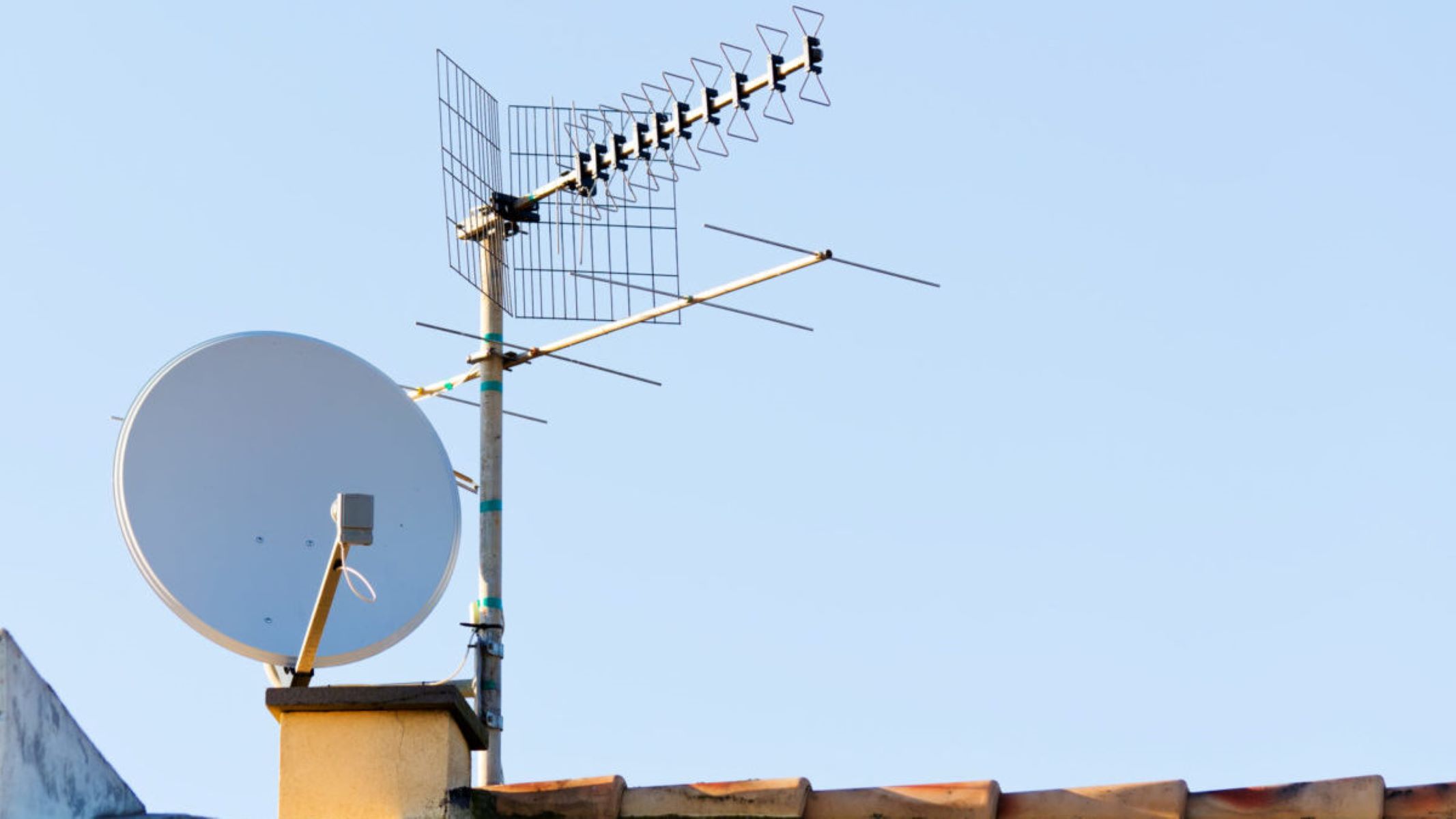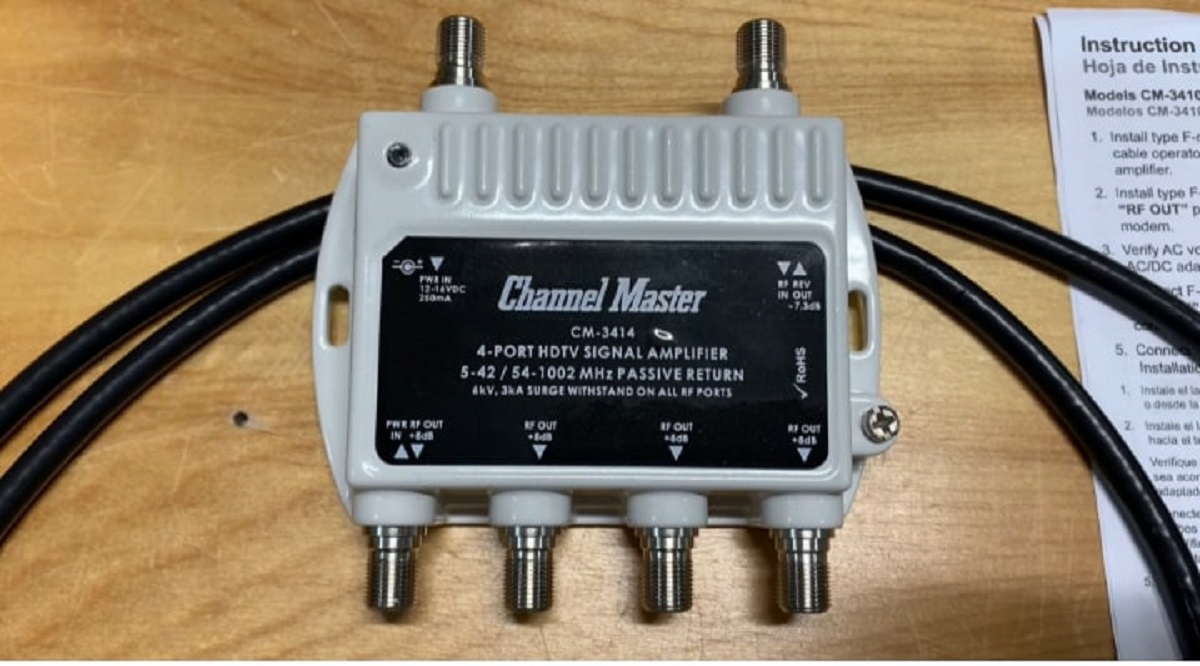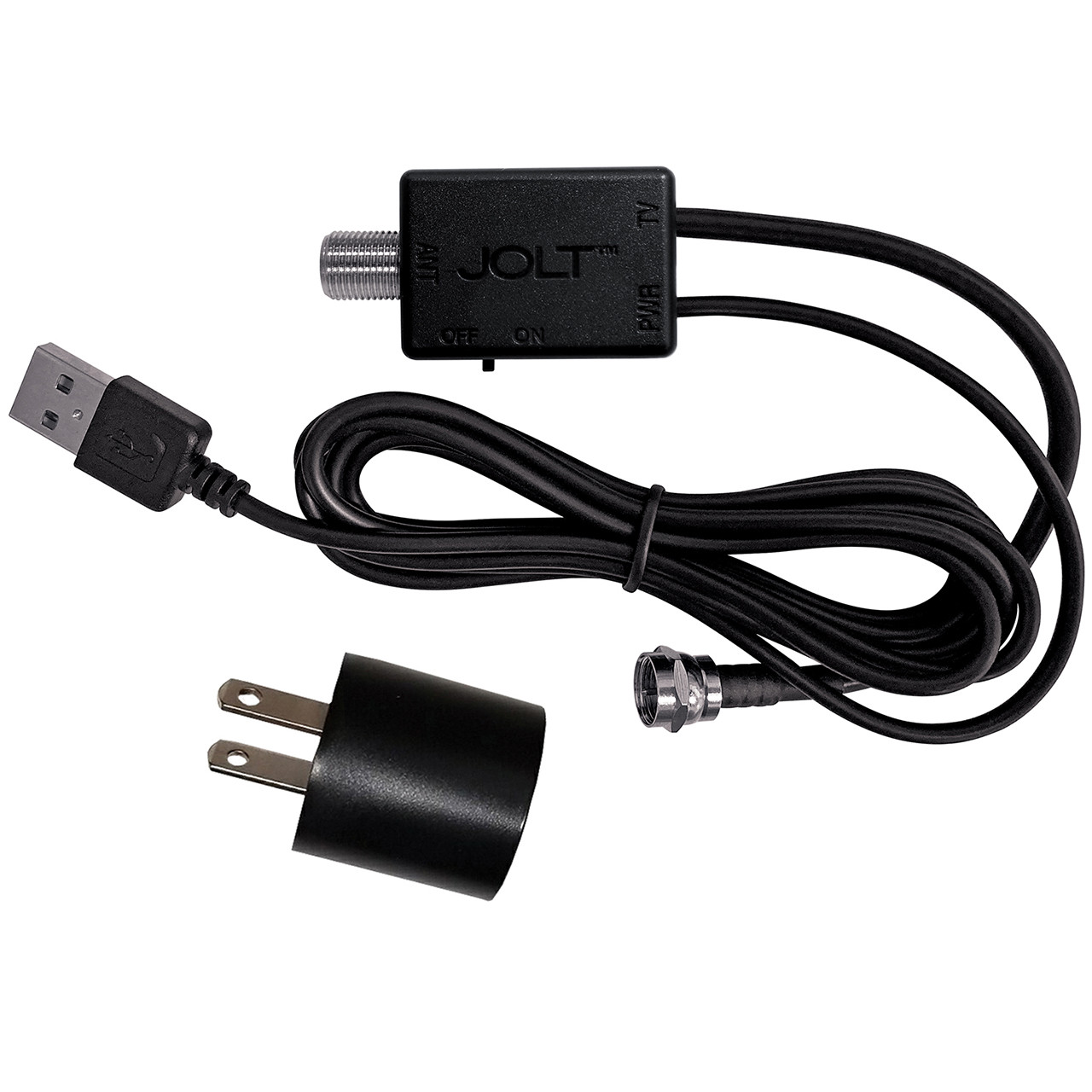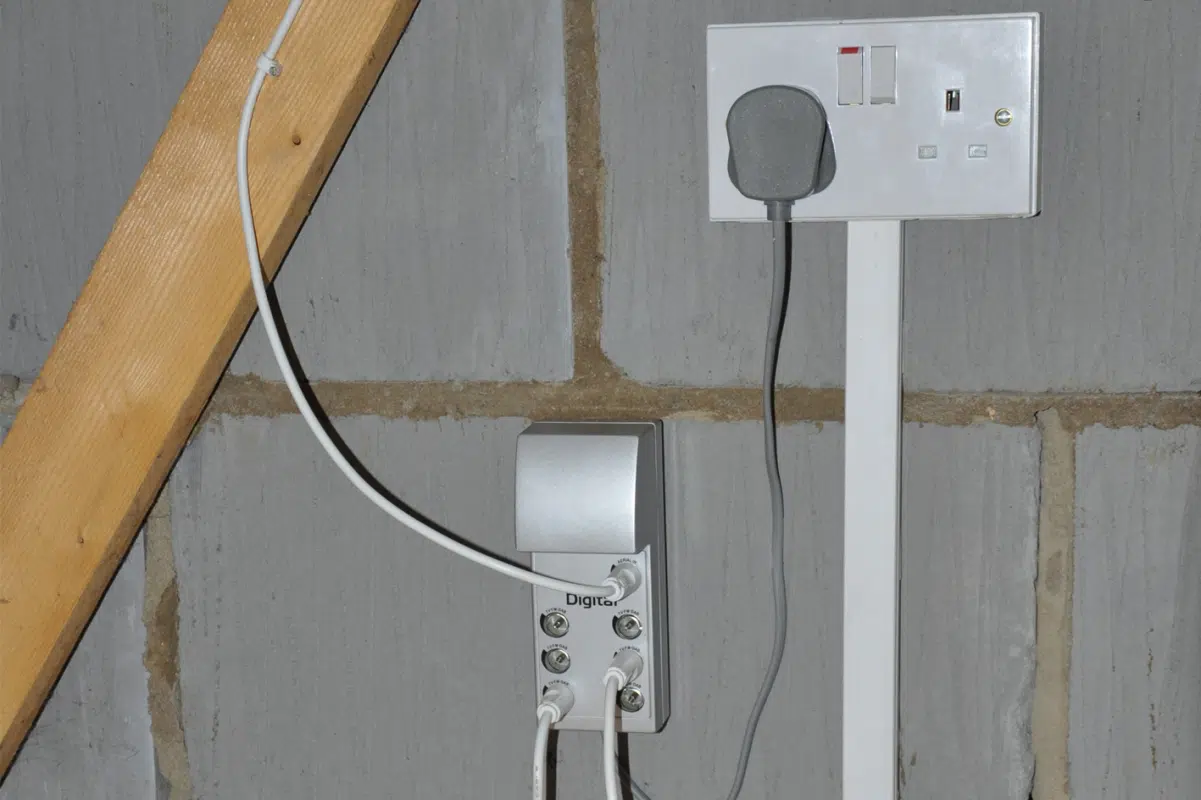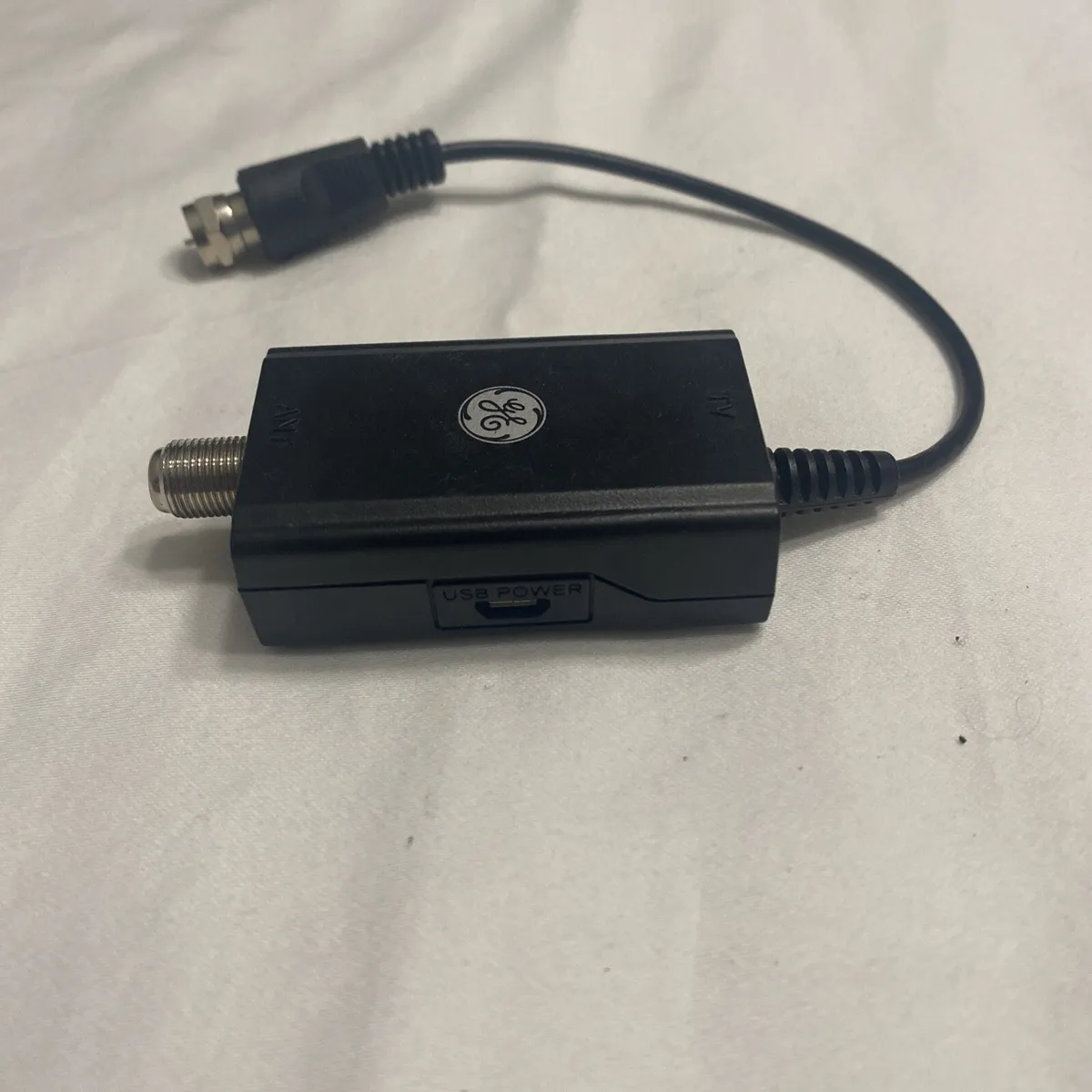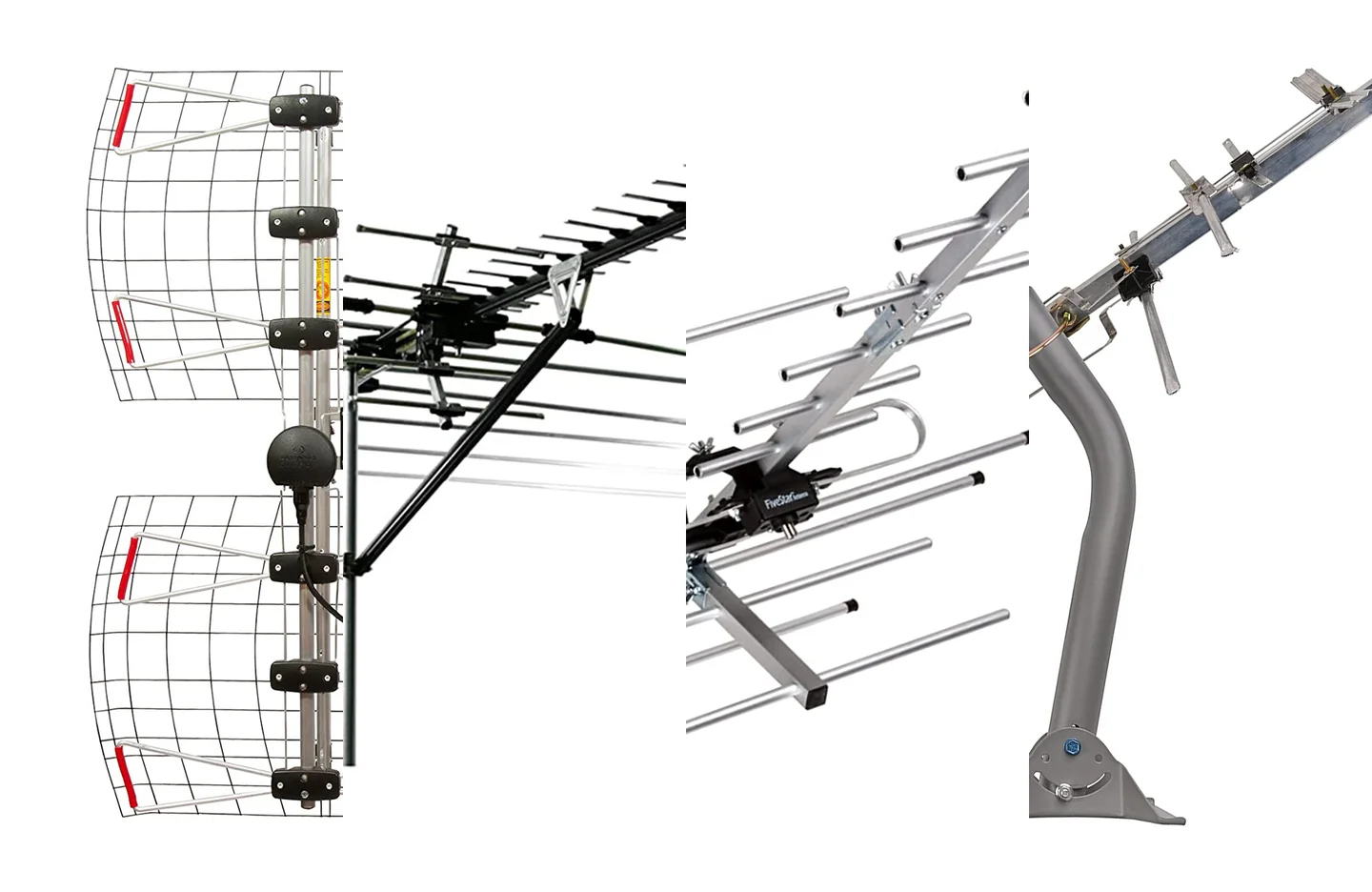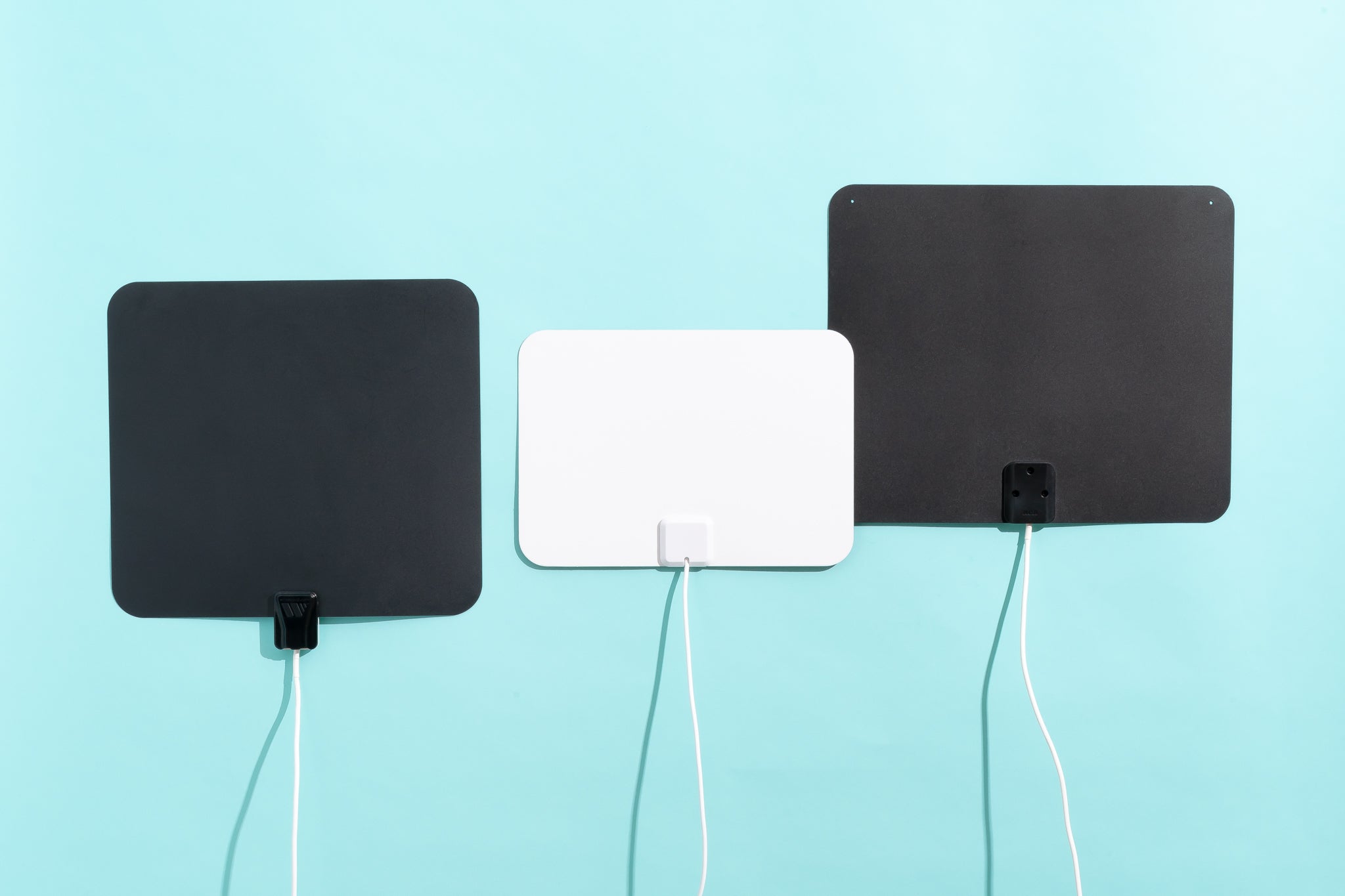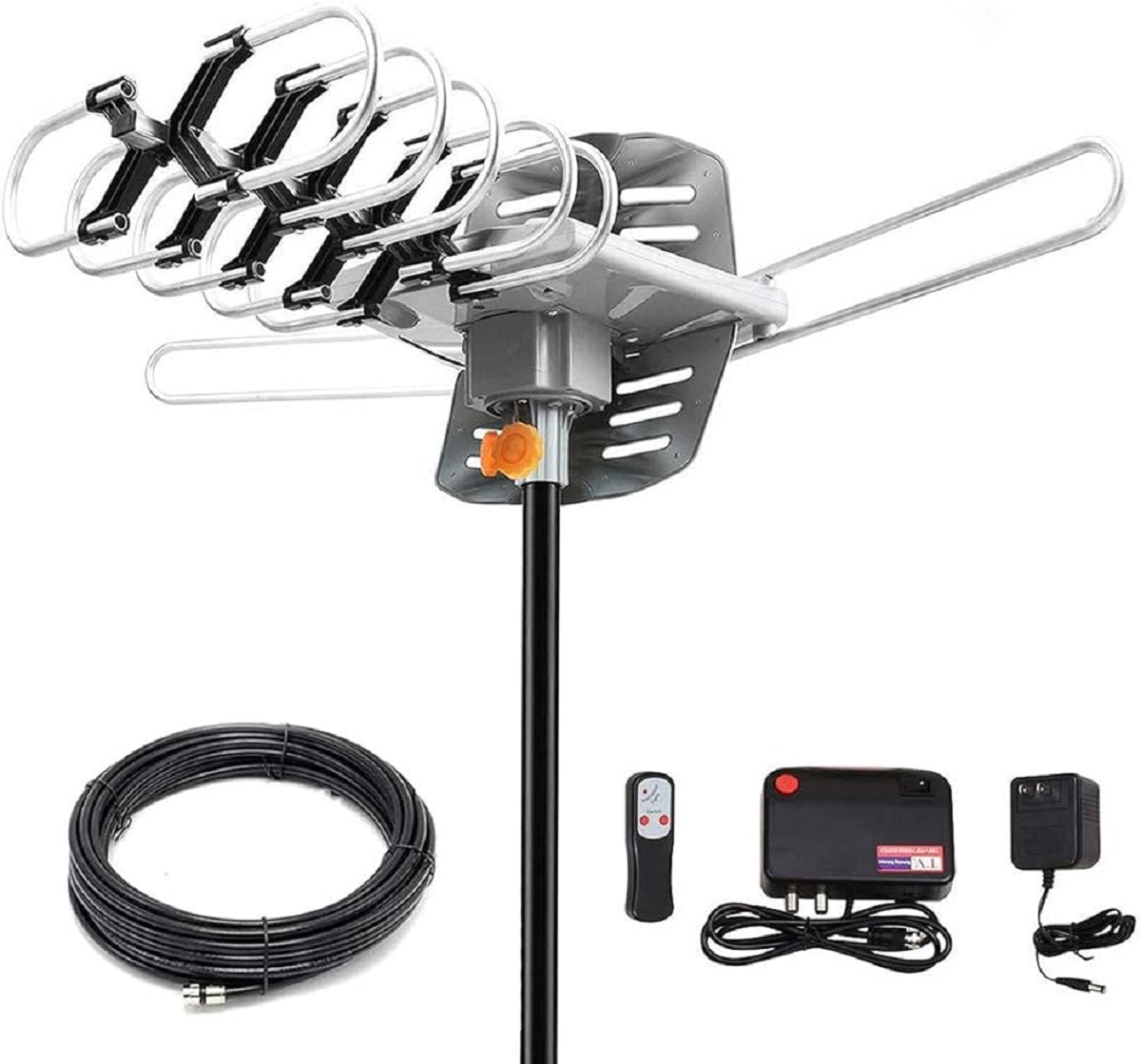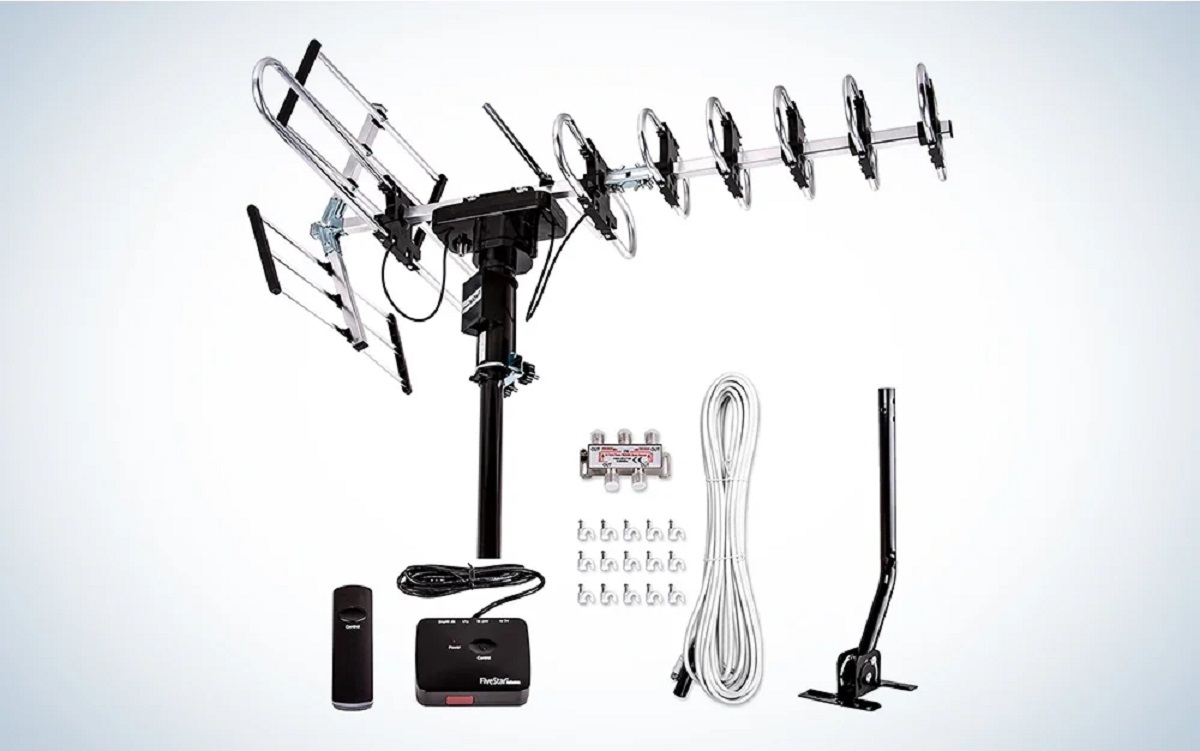Introduction
Welcome to the world of television antennas! Whether you’re looking to cut the cord or simply enhance your television reception, amplifying your TV antenna can make a significant difference in your viewing experience. With the rise in popularity of streaming services, many people have forgotten about the power of terrestrial broadcasting. However, free over-the-air TV still offers a wide variety of channels and crystal-clear picture quality.
Amplifying your TV antenna involves boosting the signal strength it receives, allowing you to pick up more channels and improve the overall quality of your viewing. By following a few simple steps, you can optimize your antenna to receive a stronger and more reliable signal.
But before we dive into the steps, it’s important to understand that the success of your antenna amplification depends on several factors. These factors include your location, the distance from broadcasting towers, the surrounding terrain, and any obstacles that may obstruct the signal. By assessing these variables, you can make informed decisions and choose the right equipment to maximize your antenna’s performance.
In this guide, we will take you through the step-by-step process of amplifying your TV antenna. Whether you’re a novice or a tech-savvy enthusiast, we’ve got you covered. So, let’s get started and power up your TV antenna!
Step 1: Assess the Reception in Your Area
Before you begin amplifying your TV antenna, it’s crucial to assess the reception in your area. This step will help you understand the strength of the signals being transmitted by local broadcasting towers and determine the type of antenna you need.
Start by researching the broadcasting towers in your vicinity. You can visit websites like AntennaWeb or TV Fool to find a list of towers and their distance from your location. These websites provide detailed information about the channels available in your area and their signal strength.
Once you have identified the broadcasting towers, check the terrain and any obstructions between your location and the towers. Tall buildings, mountains, or dense foliage can significantly weaken the reception. Keep in mind that certain materials, like concrete and metal, can also impede the signal.
The Federal Communications Commission (FCC) recommends using a signal strength measurement tool, such as a digital TV tuner or antenna signal meter, to determine the signal quality in your area. These devices can help you identify any potential signal interference and choose the right antenna for your location.
Take note of the channels you are currently receiving and their picture quality. If you’re experiencing frequent signal dropouts, pixelation, or weak reception, it may be an indication that you need to amplify your TV antenna.
Additionally, consider the distance between your home and the broadcasting towers. Generally, the farther you are from the towers, the stronger your antenna will need to be. If you are located in a rural area, an antenna with a longer range may be necessary to capture signals from distant towers.
By assessing the reception in your area, you can gain valuable insights into the strength of the signals and make an informed decision when selecting the right TV antenna for amplification. This step lays the foundation for optimizing your antenna’s performance and ensuring a superior TV viewing experience.
Step 2: Choose the Right TV Antenna
Once you have assessed the reception in your area, it’s time to choose the right TV antenna for amplification. The type of antenna you select will depend on various factors, including the distance from broadcasting towers, the signal strength in your area, and the terrain surrounding your home.
There are two main types of TV antennas: indoor and outdoor. Indoor antennas are suitable for areas with strong signal reception or when you’re located in close proximity to broadcasting towers. They are compact and easy to install, making them perfect for apartments or small living spaces. However, if you live in a remote area or have weak signal strength, an outdoor antenna is the better option as it can provide a stronger and more reliable signal.
When choosing an outdoor antenna, consider the range or distance it can cover. Look for antennas with a long-range capability, especially if you’re located far from broadcasting towers. Additionally, pay attention to the antenna’s gain, which indicates how well it can amplify the signal. Higher gain antennas are more effective at picking up weaker signals but may also be more sensitive to interference.
Another crucial factor to consider is the antenna’s frequency compatibility. Make sure the antenna is capable of receiving both UHF (Ultra High Frequency) and VHF (Very High Frequency) signals. Some channels may still broadcast on VHF frequencies, so having a compatible antenna ensures you receive a broader range of channels.
Lastly, think about the installation process and the antenna’s durability. Opt for antennas that come with mounting hardware and clear instructions for easy installation. It’s also a good idea to choose antennas with weather-resistant materials, ensuring they can withstand various weather conditions.
By carefully considering these factors, you can choose the right TV antenna that matches your location, signal strength, and viewing preferences. A well-chosen antenna will be the foundation for achieving optimal signal amplification and enjoying a wide range of high-quality television channels.
Step 3: Find the Best Placement for Your Antenna
Now that you have chosen the right TV antenna, it’s time to find the best placement for optimal signal reception. The placement of your antenna plays a crucial role in amplifying the signal and minimizing interference.
Start by identifying the location of the broadcasting towers in your area. You want to point your antenna towards these towers to ensure the best reception. Knowing the direction and angle will help you determine the ideal placement for your antenna.
For indoor antennas, try placing them near a window facing the broadcasting towers. Windows provide a clearer path for the signal to travel, reducing obstruction and improving reception. Experiment with different locations within your home to find the spot that offers the best signal strength and quality.
If you have an outdoor antenna, mounting it on your rooftop or the highest point of your property will generally yield better results. Keep in mind that the antenna should have a clear line of sight to the broadcasting towers. Avoid placing it near large obstacles or structures that can block the signal, such as trees, buildings, or metal objects.
Experiment with different orientations as well. Some antennas are multidirectional and can pick up signals from various directions, while others are designed to be pointed directly at the broadcasting towers. Adjusting the angle and direction of the antenna can significantly impact the signal quality.
It’s important to note that every home and location is unique, so there may be some trial and error involved in finding the best placement for your antenna. Don’t be afraid to make small adjustments and test the signal after each change to determine the optimal position.
In addition to physical placement, consider using antenna rotation devices or motorized mounts to fine-tune your antenna’s orientation. These devices allow you to adjust the direction of the antenna remotely, maximizing your chances of capturing a stronger signal.
By finding the best placement for your antenna, you can enhance the signal strength and minimize interference, ensuring a more reliable and consistent TV viewing experience.
Step 4: Use Amplification Devices
Amplification devices can further enhance the performance of your TV antenna by boosting the signal strength. These devices are especially useful if you’re located far from broadcasting towers or have a weak signal in your area. By incorporating amplification devices into your setup, you can ensure a stronger and more reliable signal reception.
One of the most common types of amplification devices is a preamplifier, also known as a signal booster. This device is installed between the antenna and the TV, amplifying the incoming signal before it reaches your television. Preamplifiers are particularly effective in long-range situations, helping to overcome signal loss caused by long cable runs or signal degradation.
When choosing a preamplifier, look for one that is specifically designed for outdoor antennas and offers a low noise figure. A low noise figure indicates that the device won’t introduce additional noise to the signal, ensuring a cleaner and clearer reception. Additionally, consider a preamplifier with adjustable gain control, allowing you to fine-tune the amplification based on the strength of the incoming signal.
In addition to preamplifiers, there are also distribution amplifiers available. These devices allow you to split the signal from one antenna to multiple televisions in your home, maintaining the signal strength and quality across all devices. Distribution amplifiers are an excellent option if you have multiple TVs or need to distribute the signal to different rooms.
When using amplification devices, it’s essential to follow the manufacturer’s instructions for installation and setup. Improper installation or excessive amplification can lead to signal interference and result in a degraded viewing experience. Take the time to understand the correct placement and settings for the amplification devices to achieve the best results.
Remember that not all situations will require amplification devices. If you have a strong signal in your area and your antenna is already performing well, additional amplification may not be necessary. Assess the signal strength in your location and determine if amplification devices are needed to enhance your antenna’s performance.
By incorporating amplification devices into your TV antenna setup, you can boost the signal strength, overcome distance-related challenges, and ensure a reliable and high-quality TV viewing experience.
Step 5: Adjust the Antenna for Optimal Signal
Once you have installed your TV antenna and any amplification devices, it’s important to fine-tune the antenna for optimal signal reception. Making precise adjustments to the position and orientation of the antenna can significantly improve the signal strength and overall viewing experience.
Start by scanning for channels on your TV. Most modern TVs have a built-in channel scan feature that automatically detects the available channels in your area. This will give you an idea of the signal strength and the channels you can receive.
While conducting the channel scan, systematically adjust the position of your antenna. Gradually rotate or move the antenna in small increments and rescan the channels after each adjustment. Keep an eye on the signal quality and strength displayed on your TV screen to determine if the changes are improving the reception.
Pay attention to the subtle changes in the signal as you make adjustments. Sometimes, a slight shift in the antenna’s position can make a significant difference in signal strength. Take note of the direction and angle where you achieve the strongest signal.
It’s important to be patient during this process and experiment with different orientations. Try both horizontal and vertical positions to see which one yields the best results. Keep in mind that the optimal position may not always be intuitive, so don’t be afraid to explore various angles and directions.
Additionally, consider the height of your antenna. Sometimes, raising the antenna a few feet higher can improve reception, especially if there are obstructions or interference at ground level. Experiment with different heights to find the sweet spot for optimal signal reception.
While adjusting the antenna, it can be helpful to have someone inside monitoring the signal strength on the TV screen. This collaboration ensures that you can make immediate observations and adjustments, saving time and effort.
Remember to note the final position and orientation of the antenna for future reference. This will be helpful in case of any changes or when repositioning the antenna in the future.
By carefully adjusting your TV antenna, you can maximize the signal strength and reception, resulting in a clear and uninterrupted TV viewing experience.
Step 6: Fine-Tune the Antenna Using a Signal Meter
If you want to achieve precise and accurate signal optimization for your TV antenna, using a signal meter can be extremely helpful. A signal meter provides real-time feedback on signal strength and quality, allowing you to fine-tune the antenna for optimal performance.
To begin, connect the signal meter to your TV antenna. Follow the manufacturer’s instructions on how to properly connect the meter in line with the antenna cable. Make sure the meter is calibrated and set to the correct frequency range (UHF and VHF) to match your antenna.
Once the meter is connected, turn on your TV and switch to the signal meter’s display. The meter will provide a visual representation of the signal strength and quality as you make adjustments to the antenna’s position and orientation.
Begin by resetting your antenna to its starting position and orientation. Gradually rotate or move the antenna in small increments and observe the signal meter’s reading as you make these adjustments. As you move the antenna, you’ll see the signal meter’s display change in response to the signal strength and quality.
The goal is to find the position and orientation that results in the highest or strongest signal reading on the meter. Pay attention to changes in both signal strength and signal quality. A high signal strength reading is important, but it’s equally important to ensure a clear and stable signal without significant interference or noise.
Continue the fine-tuning process by making small adjustments to the antenna and monitoring the signal meter’s display. Take note of the position or direction that provides the strongest and most reliable signal reading on the meter.
Be patient and take your time during this process. Incremental adjustments and careful observation will help you achieve the best signal reception for your TV antenna. It’s also a good idea to have someone indoors watching the TV screen to provide immediate feedback on any changes made.
Once you have found the optimal position for your antenna based on the signal meter’s reading, secure the antenna in place. Use mounting hardware or brackets to ensure that the antenna remains fixed and stable in its optimal position.
By using a signal meter to fine-tune your TV antenna, you can achieve precise and accurate signal optimization, resulting in a superior and reliable TV viewing experience.
Conclusion
Amplifying your TV antenna can significantly enhance your television viewing experience by improving signal strength and quality. By following the steps outlined in this guide, you can optimize your antenna’s performance and enjoy a wider range of channels with crystal-clear picture and sound.
Remember to begin by assessing the reception in your area to determine the signal strength and identify any potential obstacles or interference. This will help you choose the right antenna and amplification devices suitable for your location.
Once you have selected the appropriate equipment, finding the best placement for your antenna is crucial. Experiment with different positions, orientations, and heights to achieve optimal signal reception while minimizing obstructions and interference.
Using amplification devices, such as preamplifiers and distribution amplifiers, can further boost the signal strength, especially in areas with weak reception or long cable runs. However, ensure that you follow the manufacturer’s instructions for proper installation and settings.
Take the time to fine-tune your antenna using methods such as adjusting the position, orientation, and height. Greatly improve the signal reception by using a signal meter to achieve accurate and precise optimization.
In conclusion, amplifying your TV antenna requires careful consideration of your location, equipment selection, and antenna adjustments. By following these steps, you can significantly enhance your TV viewing experience and enjoy a wider selection of channels with improved signal quality. So, power up your TV antenna and elevate your entertainment to new heights!







